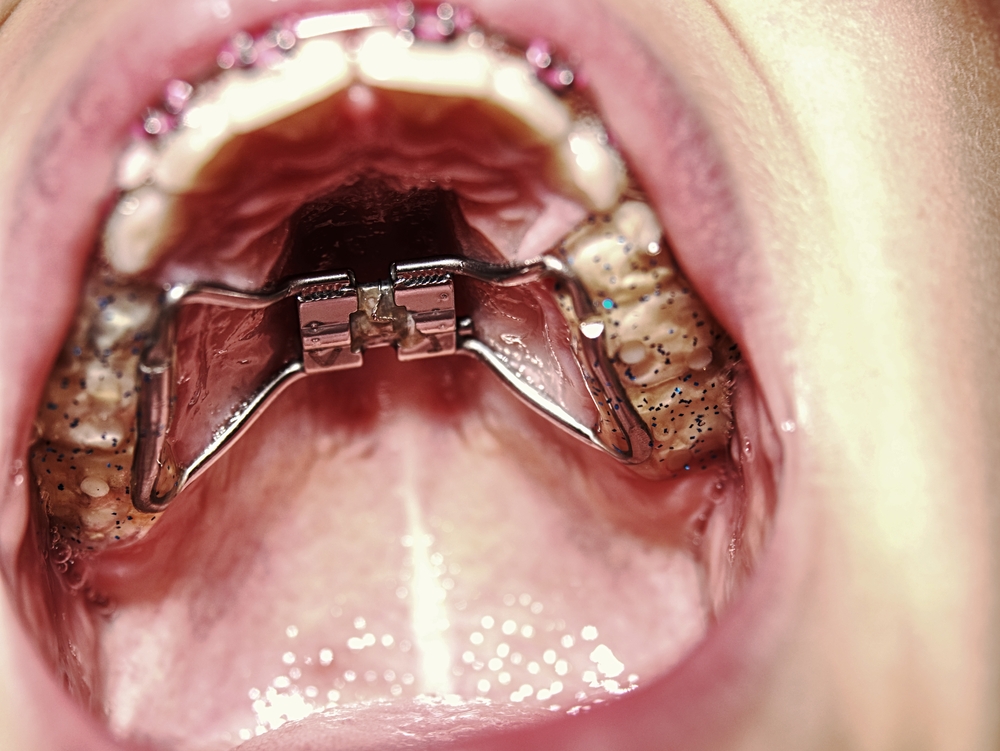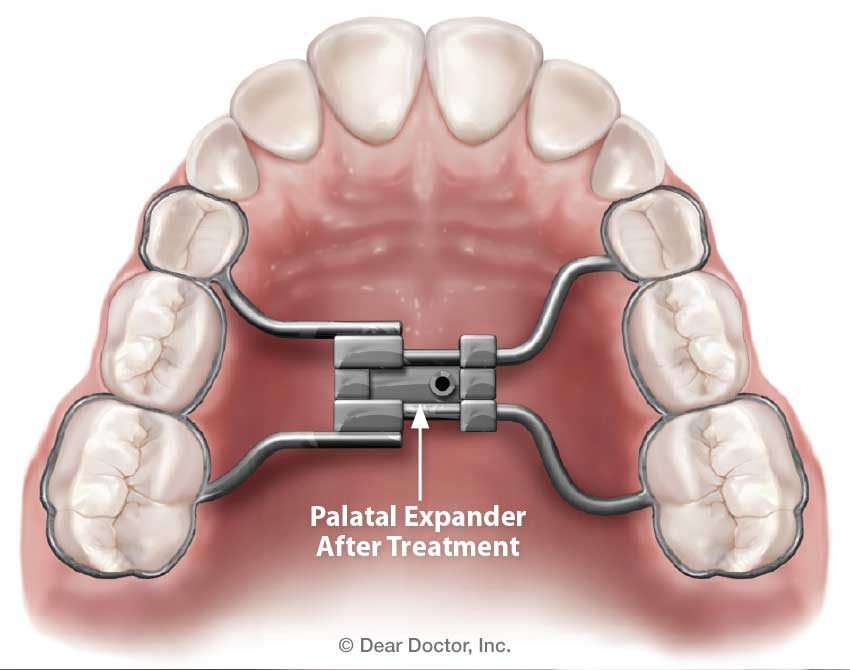Palate expanders are commonly used in orthodontics to correct issues with the alignment of the teeth and jaws. However, they can also have a positive impact on breathing. By widening the palate, a palate expander can help to alleviate nasal congestion, reduce snoring, and improve overall breathing function.
When the palate is narrow or constricted, it can obstruct the nasal passages, leading to mouth breathing. Mouth breathing can have several negative effects on overall health, including dry mouth, bad breath, and an increased risk of dental problems. It can also contribute to sleep apnea, snoring, and other breathing disorders.
In the next sections of this article, we will explore common breathing problems, how a palate expander works, the benefits of using a palate expander, who can benefit from it, the process of using a palate expander, and the expected results and success rate.
The Importance of Proper Breathing

Proper breathing is essential for maintaining good overall health and well-being. When we breathe properly, our bodies receive the oxygen they need to function optimally. Oxygen is vital for the production of energy, the elimination of waste products, and the proper functioning of all our organs and systems.
One of the main reasons why proper breathing is important is because it helps to oxygenate our blood. Oxygen is carried by red blood cells and delivered to every cell in our body. When we breathe shallowly or incorrectly, we don’t take in enough oxygen, which can lead to a variety of health problems.
Proper breathing also helps to regulate our nervous system. When we breathe deeply and slowly, we activate the parasympathetic nervous system, which is responsible for relaxation and rest. This helps to reduce stress, anxiety, and tension in the body, promoting a sense of calm and well-being.
In addition, proper breathing plays a crucial role in maintaining good posture. When we breathe correctly, our diaphragm, a large muscle located below the lungs, moves up and down, helping to support the spine and maintain proper alignment. This can prevent back pain, improve digestion, and enhance overall physical performance.
Furthermore, proper breathing is important for effective detoxification. When we exhale, we release carbon dioxide, a waste product produced by our cells. Deep breathing allows for the efficient elimination of carbon dioxide from the body, helping to cleanse and purify our system.
Unfortunately, many people breathe incorrectly due to various factors such as stress, poor posture, and respiratory conditions. This can lead to a range of breathing problems, including shallow breathing, mouth breathing, and snoring. These issues can have a negative impact on our health, affecting our energy levels, sleep quality, and overall well-being.
Common Breathing Problems

Proper breathing is essential for overall health and well-being. However, many people suffer from common breathing problems that can affect their quality of life. Some of the most common breathing problems include:
1. Nasal congestion: This is a condition where the nasal passages are blocked or inflamed, making it difficult to breathe through the nose. It can be caused by allergies, sinus infections, or structural issues in the nose.
2. Asthma: Asthma is a chronic respiratory condition characterized by inflammation and narrowing of the airways. It can cause wheezing, shortness of breath, and coughing.
3. Sleep apnea: Sleep apnea is a sleep disorder where breathing repeatedly stops and starts during sleep. It can result in loud snoring, daytime sleepiness, and fatigue.
4. Chronic obstructive pulmonary disease (COPD): COPD is a progressive lung disease that makes it difficult to breathe. It includes conditions such as chronic bronchitis and emphysema.
5. Allergies: Allergies can cause inflammation in the airways, leading to symptoms such as sneezing, coughing, and difficulty breathing.
6. Sinusitis: Sinusitis is an inflammation of the sinuses, which can cause nasal congestion, facial pain, and difficulty breathing through the nose.
8. Anxiety and stress: Anxiety and stress can affect breathing patterns, leading to shallow or rapid breathing, which can cause feelings of breathlessness.
How a Palate Expander Works
A palate expander is a dental device that is used to widen the upper jaw. It works by applying gentle pressure to the palate, or the roof of the mouth, gradually expanding the width of the jaw over time.
In addition to widening the jaw, a palate expander can also help improve breathing. By expanding the upper jaw, the airway is also widened, allowing for better airflow. This can be particularly beneficial for individuals who have breathing issues, such as sleep apnea or chronic snoring.
Overall, a palate expander is an effective and non-invasive solution for correcting dental and breathing issues. It works by gradually widening the upper jaw, creating more space for the teeth and improving the alignment of the jaw. Additionally, it can help improve breathing by expanding the airway. If you are experiencing dental or breathing problems, a palate expander may be a suitable treatment option for you.
The Benefits of Using a Palate Expander
A palate expander is a dental device that can provide several benefits for individuals with certain dental and breathing issues. Here are some of the key benefits of using a palate expander:
1. Improved Breathing
One of the primary benefits of using a palate expander is improved breathing. By expanding the palate, the device can create more space in the nasal cavity, allowing for better airflow. This can be especially beneficial for individuals who suffer from breathing problems such as snoring, sleep apnea, or chronic nasal congestion.
2. Correcting Dental Misalignments
In addition to improving breathing, a palate expander can also help correct dental misalignments. By gradually widening the upper jaw, the device can create more space for crowded teeth, reducing the need for more invasive orthodontic treatments such as tooth extraction or braces. This can result in a straighter, more aesthetically pleasing smile.
3. Enhancing Facial Symmetry
A palate expander can also contribute to enhancing facial symmetry. By widening the upper jaw, the device can help align the upper and lower jaws properly, improving the overall balance and proportion of the face. This can lead to a more harmonious facial appearance.
4. Improved Chewing and Digestion
By expanding the palate, a palate expander can also improve chewing and digestion. With a wider upper jaw, there is more room for the teeth to properly chew food, resulting in more efficient digestion. This can help prevent digestive issues such as acid reflux or indigestion.
5. Enhanced Speech Development
Another benefit of using a palate expander is enhanced speech development. By correcting dental misalignments and improving the position of the tongue, the device can help individuals achieve clearer speech and pronunciation. This can be particularly beneficial for children who are still developing their speech skills.
Who Can Benefit from a Palate Expander?
A palate expander is a dental device that can be beneficial for a variety of individuals. It is commonly used in orthodontic treatment to address issues related to the alignment of the teeth and jaw. While it is most commonly used in children and teenagers, adults can also benefit from using a palate expander.
Children and Teenagers
Children and teenagers who have issues with their dental arches or have a narrow palate can benefit from using a palate expander. This device can help expand the upper jaw, creating more space for permanent teeth to erupt properly. It can also help correct crossbites, overbites, and underbites, improving the overall alignment of the teeth and jaw.
Using a palate expander at a young age can also help improve breathing. By expanding the palate, it can create more room in the nasal cavity, allowing for better airflow and reducing the risk of breathing problems such as sleep apnea or snoring.
Adults

While palate expanders are commonly used in children and teenagers, adults can also benefit from using this device. Adults who have a narrow palate or issues with their dental arches can benefit from using a palate expander to improve their dental alignment. This can help address issues such as crowding, misalignment, and bite problems.
In addition, adults who have breathing problems related to a narrow palate or a restricted airway can also benefit from using a palate expander. By expanding the palate, it can create more space in the nasal cavity, improving airflow and reducing the risk of breathing difficulties.
The Process of Using a Palate Expander
Using a palate expander is a simple and non-invasive process that can help improve breathing and correct certain dental issues. The process typically involves the following steps:
2. Customization: Once the decision is made to proceed with a palate expander, the orthodontist will take impressions of your teeth and palate to create a customized expander. This ensures a perfect fit and optimal results.
3. Insertion: The palate expander is then inserted into the mouth and attached to the upper molars using bands or cement. It consists of a metal framework with a screw in the middle.
4. Activation: After the expander is in place, the orthodontist will provide instructions on how to activate it. This usually involves turning a key or screw at regular intervals to gradually widen the expander.
5. Adjustment: Regular visits to the orthodontist are necessary to monitor the progress and make any necessary adjustments to the expander. The orthodontist will check the expansion and make sure it is progressing as planned.
6. Completion: Once the desired expansion is achieved, the orthodontist will remove the palate expander. At this point, the patient may be required to wear a retainer to maintain the results.
Expected Results and Success Rate

When using a palate expander, patients can expect to see a variety of results depending on their specific needs and goals. One of the main benefits of using a palate expander is the improvement in breathing. By widening the palate, the airway is also expanded, allowing for better airflow and easier breathing.
In addition to improved breathing, a palate expander can also help with other issues such as overcrowding of teeth, crossbite, and narrow arches. By creating more space in the mouth, the palate expander can help align the teeth properly and improve overall oral health.
Factors Affecting Success Rate
There are several factors that can affect the success rate of using a palate expander. These include:
- Age: Palate expansion is most effective in children and teenagers whose bones are still growing and developing. However, adults can also benefit from palate expansion, although the process may take longer.
- Severity of the condition: The success rate may vary depending on the severity of the patient’s condition. In some cases, additional orthodontic treatments may be required to achieve the desired results.
Conclusion

Dr. Fidel Cann: Esteemed orthodontist with a lifelong dedication to enhancing smiles and oral health. Pioneering expertise, compassionate care.





